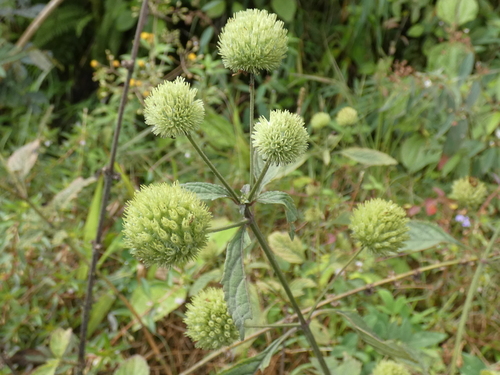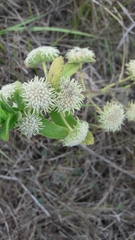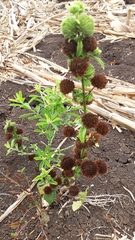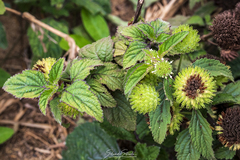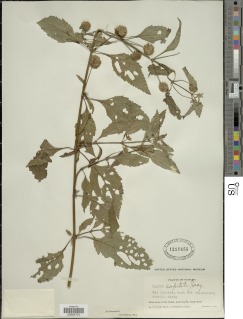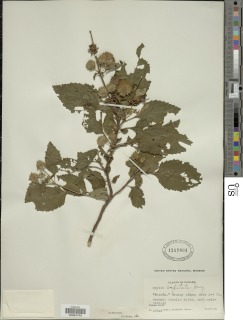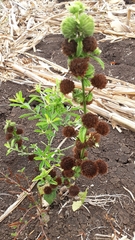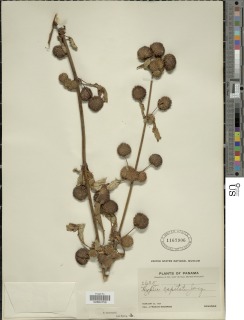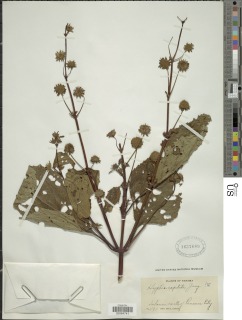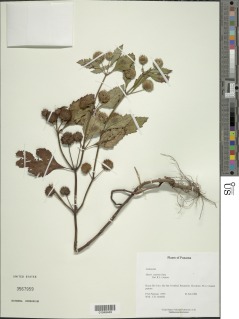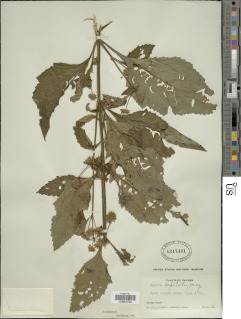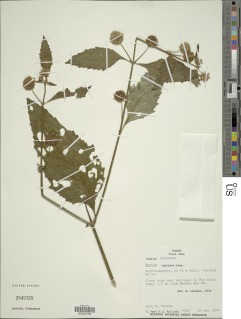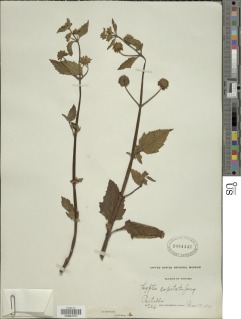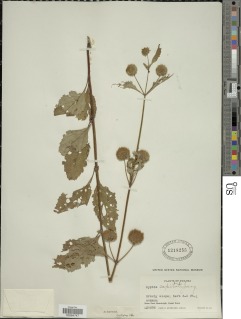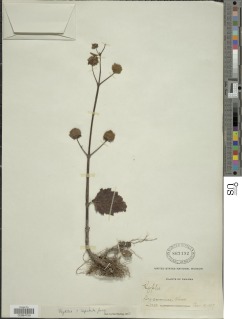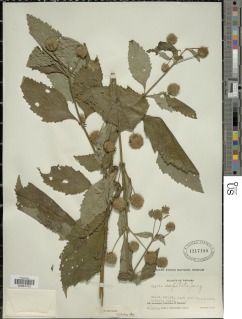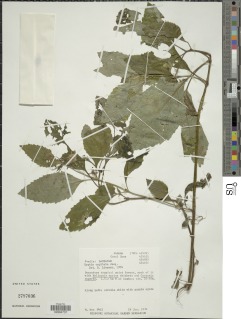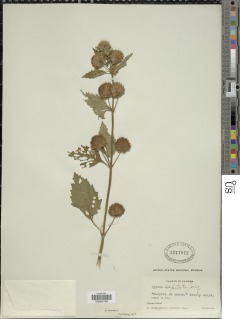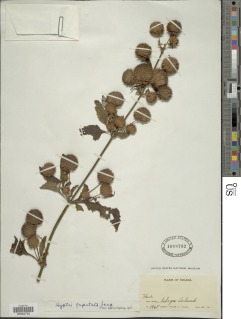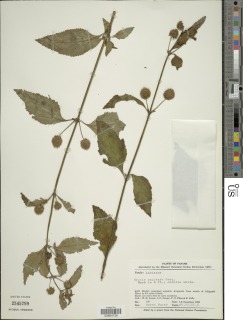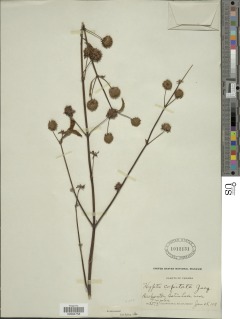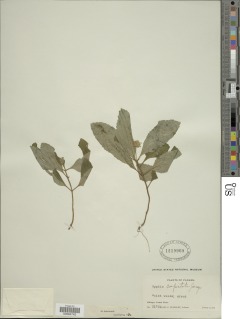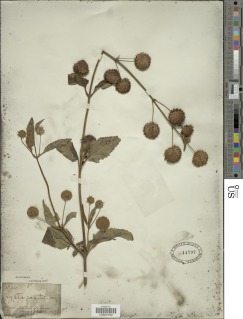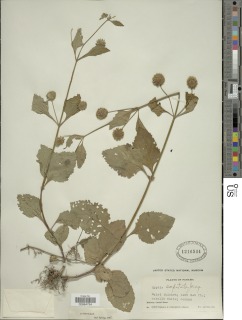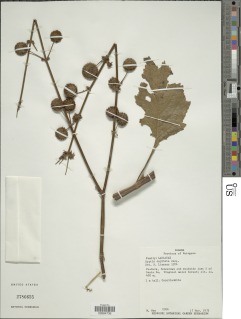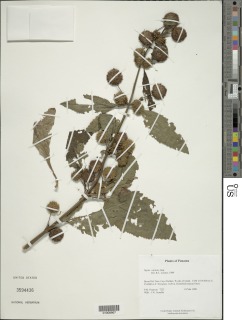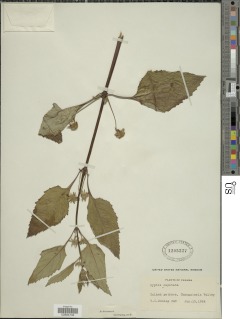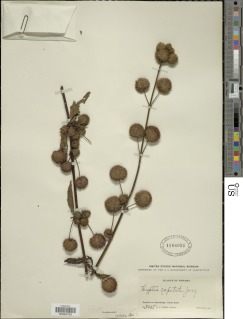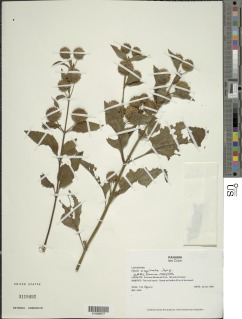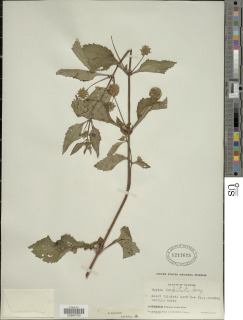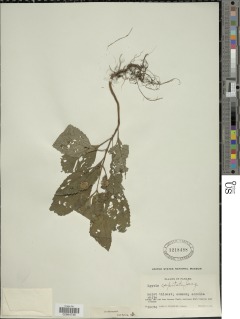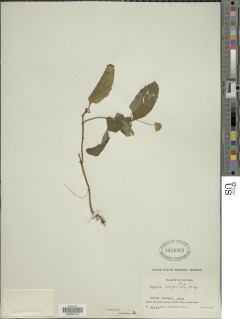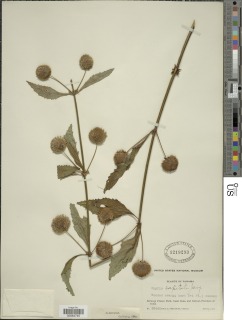

|
|
|
|
Family: Lamiaceae
False Ironwort
[Hyptis pittieri Briq.] |
Herb, to 2 m tall, sparsely to moderately pubescent throughout. Petioles slender, 5-20 mm long; blades ovate to rhombic, acute at apex, attenuate at base, 5-12 cm long, 2-6 cm wide, irregularly serrate. Flower heads at first hemispheroid, later globular; flowers numerous, many open at a time in each head; calyx scabrid, hispid at base outside, with a pubescent line inside above nutlets, the lobes 5, slender, at first equaling tube, the tube much longer in fruit; corolla white, ca 4 mm long, slightly exceeding calyx, bilabiate, the middle lobe of upper lip hooded, loosely enclosing the style and 2 longest stamens, folding backward following anthesis; anthers red, closed at anthesis; filaments curling over the edge of upper lip in time; stigma held midway between long and short pairs of stamens, its to lobes open at anthesis. Nutlets usually 4, ovoid, ca 1 mm long, smooth. Croat 4406, 8683. Common in clearings. Flowers mostly in the early dry season, with the fruits maturing late in the dry season. This species differs considerably from H. mutabilis in its pollination behavior. Those individuals of H. mutabilis observed shed the pollen in the bud, and the stamens were thrown forward violently after being opened forcibly (while the stigma was still unopened). In H. capitata only two stamens are held within the upper lip and then only very loosely. Their flowers are probably not forced open and the stamens, when released, do not spring forward violently. Both protandrous and protogynous forms were observed in a single population of H. capitata, though the anthers in some plants were shed in bud, with the style remaining unopened until most of the pollen was shed. Mexico to Colombia, Venezuela, Ecuador, and Peru; Asia and Polynesia. In Panama, widespread; known from tropical moist forest in the Canal Zone, Bocas del Toro, San Blas, Veraguas, Los Santos, Panama, and Darien, from premontane moist forest in Los Santos and Panama, and from premontane wet forest in Chiriqui, Coclé and Panama. |

